Wasteland 3 hands-on: A familiar new post-apocalypse
Wasteland finally looks ready to step out of Fallout’s shadow.
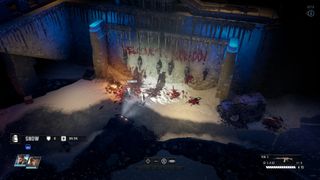
Colorado, after the end of the world, is a different sort of place than Arizona. It's cold, dark, snowy, and its people—some of them, anyway—enjoy life in a relatively well-ordered, functional society. But in many ways it's similar to the desert wasteland: The world is still a mess, and what remains of civilization is about two bad days away from collapsing into anarchy or worse.
Wasteland 3 is a lot like that, too. It’s different from Wasteland 2 in some notable and positive ways, but once you start wading through the mangled bodies and assholes with guns, it starts to feel very familiar, in a good way.
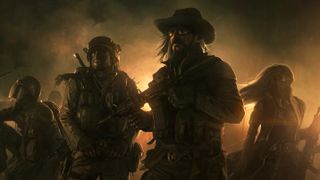
The destruction of the Cochise AI in Wasteland 2 left the Rangers homeless, broken, and desperate. The Patriarch of Colorado is offering a deal for all the supplies they can handle—but at what cost?
InXile's end-of-the-world hellscape a brutal, messy place that will trip you up at every opportunity. Very early in the demo, I allowed a criminal to escape in exchange for releasing her hostage safely—score one for the good guys! Except the criminal ran away to warn the rest of her gang, who executed the other hostages they were holding so they could lay an ambush for me. Whoops. Later on, I released a starving man from a cage, which seemed like the humane thing to do, buuuut I'm pretty sure that's going to come back to bite me in the ass too.
The moral quandaries are fun but the awfulness of Wasteland 3's world gets heavy-handed at times, and I do worry that in the drive to differentiate itself from Bethesda's sanitized Fallout games, Wasteland 3 might go a little too far in the other direction. The opening sequence depicts a catastrophic ambush of a Ranger convoy (which is how you end up alone, so far from home), and the graphic descriptions of the Ranger bodies you'll stumble on suggest that your attackers spent time torturing and killing them in the worst ways possible.
I found it immersion-breaking—not the descriptions themselves, but the idea that someone would have the time and inclination to slice open a Ranger's belly and yoink his guts out while he's still alive, ooh the horror! I get that we're establishing right from the start that the bad guys are vicious and cruel and crazy, but the bullets and rockets flying around clearly indicate that this all happened in the heat of the moment, while the fight is still ongoing. It's a distracting mix of narrative elements—the show clashing with the tell—and I hope that it's smoothed out for the full release.
The demo doesn't dig deep into the story of Wasteland 3, but it does introduce the obligatory Ranger base, a sprawling, dilapidated, but still largely functional military facility. More interesting is the man who owns it: The Patriarch, who invited the Rangers to Colorado to help him deal with threats to the city-state he runs. He's a charismatic leader, and his long-time followers are fully and completely committed to him.
There’s no denying that he's achieved results, but at a very steep cost. The law is enforced harshly, and those on the fringes of society are effectively trapped there, subject to abuses of authority and worse. (Sound familiar?)
The biggest gaming news, reviews and hardware deals
Keep up to date with the most important stories and the best deals, as picked by the PC Gamer team.
This is where I hope Wasteland 3 really shines. The combat is bloody and satisfying, but I want to stick my face into the moral meatgrinder of a (maybe) good man doing (maybe) horrific things to (maybe) rebuild civil society in a world overrun by mutants, violent gangs, and (definitely) worse—and who might actually be succeeding in the effort.
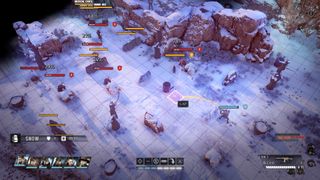
The game world is ugly and broken, but the game itself is much prettier than its predecessor. Wasteland 2 had a distinctly '90s Fallout look to it, with visually worn metal and buttons built around an image of a weapon across the bottom of the screen. Wasteland 3 cleans up that rugged, retro look by moving the weapon indicator to the right and eliminating the quick-access inventory buttons entirely. Other elements of the UI, like the "printout" describing actions and events, are gone too.
It's less cluttered and represents a distinct break from Wasteland 2's Fallout-inspired design (which was ironic, since Fallout was inspired by the original Wasteland. Videogames, like time, are a flat circle). The smaller, less intrusive control scheme provides pop-ups as necessary to accomplish the same tasks as the older, busier interface.
While Wasteland 3's visual style has mostly moved beyond the early Fallout games, it loops back around on itself in one amusing way. Attributes, skills, and perks in the game are accompanied by cartoon-like images of two robots, a fat man and a little boy, who throw off a very Vault Boy-like vibe. I get the feeling we’re going to be seeing more of these two as it approaches release.
The inventory system has also undergone a big change. Each character in Wasteland 2 had their own individual inventory, but in Wasteland 3 everything is drawn from a shared pool, so there's no need to worry about who's packing what or swapping things around to ensure that everyone has the best possible loadout. Filtering options help with the clutter, and it dramatically simplifies the job of kitting out your team: Each character can see everything that's in the party's inventory, and draw from it accordingly.
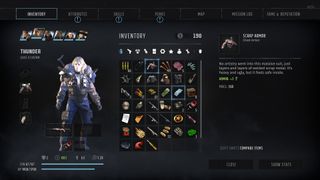
You’ll have plenty of opportunities for chit-chat as you explore this new part of the country, but combat remains the core of the game, and Wasteland 2 veterans (or Fallout fans with good memories) will feel right at home. Each character has a number of action points based on their attributes, which can be spent on movement, shooting, reloading, or using items. Combat is turn-based. But initiative, which controls the order in which your party members take their turns in Wasteland 2, is out. In Wasteland 3, you can switch between your squaddies as you like. Move your gunner to your medic, have your medic heal her, and then move the gunner back into cover, for instance. The ability to move and execute freely is a significant change that really increases your team's flexibility in a fight.
There are a few other, more minor changes in the way fights play out. The automatic cover system remains but crouching, which improved evasion and accuracy in Wasteland 2, has been eliminated. Precision strikes have also been removed; in their place, weapons have special attacks that are charged up with regular use. They're a bit like ultimate powers in Overwatch. After a set number of standard attacks, rocket launchers can pop off a Nuke Strike, for example, and heavy machine guns can deal out a Torrent Strike. Players can also opt to dedicate action points to improved defense or ambushes, or carry a limited number over to the next turn, something that's not possible in Wasteland 2.
The perk system has also been given a nice upgrade. In Wasteland 2, perks carry specific requirements but they're listed alphabetically, which requires a lot of digging to find perks that work well together. In Wasteland 3 they're laid out along a kind of skill tree (although a small number of "General Perks" are open to everyone), so it's much easier to visualize how it all comes together.
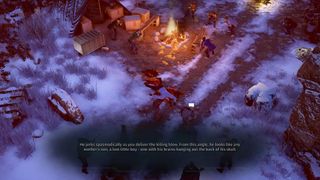
My time with Wasteland 3 ended after I gunned down a gang of teenagers. I know that sounds bad, and okay, I suppose it is bad, but in my defense they were really asking for it. In the world of Wasteland, that kind of thing is okay—with certain caveats. Wasting the teeny-boppers made one of my party members happy, and it was probably a mercy in the long run. But a post-preview wrap-up told me that offing them angered two of Colorado's dominant power structures, which will make my immediate future a lot more complicated. I probably should've seen that coming.
The mechanical tuning and polish in Wasteland 3 should eliminate some of the frustrations of the previous game without entirely relieving players of responsibility (don't forget to put a grenade in your quick slot, or you won't be throwing any when the crunch comes), and while a part of me laments the loss of the old-time Fallout look, I have to admit that the upgraded graphics and effects make for a nice layer of visual flash that Wasteland 2 lacked. Coupled with the underlying basics of accessible turn-based combat and a genuinely gritty, messy post-apocalyptic setting, this could be one of the best RPGs of 2020. I will miss the desert, but I have very high hopes for the Rangers' new home.
Andy has been gaming on PCs from the very beginning, starting as a youngster with text adventures and primitive action games on a cassette-based TRS80. From there he graduated to the glory days of Sierra Online adventures and Microprose sims, ran a local BBS, learned how to build PCs, and developed a longstanding love of RPGs, immersive sims, and shooters. He began writing videogame news in 2007 for The Escapist and somehow managed to avoid getting fired until 2014, when he joined the storied ranks of PC Gamer. He covers all aspects of the industry, from new game announcements and patch notes to legal disputes, Twitch beefs, esports, and Henry Cavill. Lots of Henry Cavill.
Most Popular

